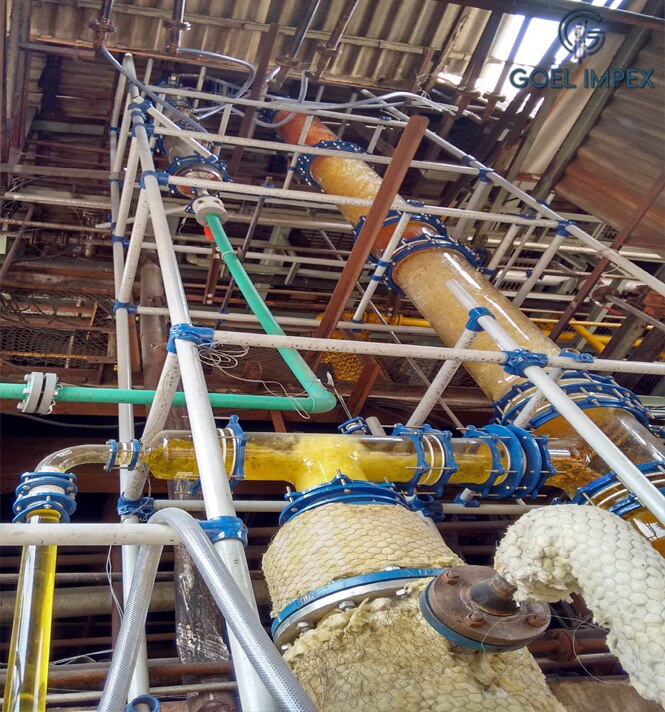Description
Product details
Sulphuric Acid Concentration Sulphuric acid (H₂SO₄) concentration refers to the process of increasing the percentage of H₂SO₄ in a given solution, typically from dilute concentrations (e.g., 70–80%) to higher levels (e.g., 98–99%). This is an important process in industries such as fertilizers, petrochemicals, dyes, explosives, and metallurgy. 🔧 Methods of Sulphuric Acid Concentration 1. Evaporation Under Vacuum Principle: Water is removed from dilute sulphuric acid by boiling under reduced pressure, using heat exchangers. Equipment: Often done in a falling film evaporator, wiped film evaporator, or rotating disk evaporator made from corrosion-resistant materials (e.g., glass, PTFE-lined steel, silicon carbide). Temperature: Typically around 100–150°C, depending on the vacuum level. 2. Distillation (for Lab Scale) In lab settings, dilute acid may be concentrated by careful distillation up to ~98.5%. Above 98.5%, H₂SO₄ starts to decompose, releasing SO₃ and water. 3. Sulphur Trioxide (SO₃) Absorption Used industrially to increase H₂SO₄ concentration beyond 98.5% by absorbing SO₃ gas into 98% H₂SO₄ to form oleum (fuming sulphuric acid). The oleum can later be diluted back to desired concentrations.






